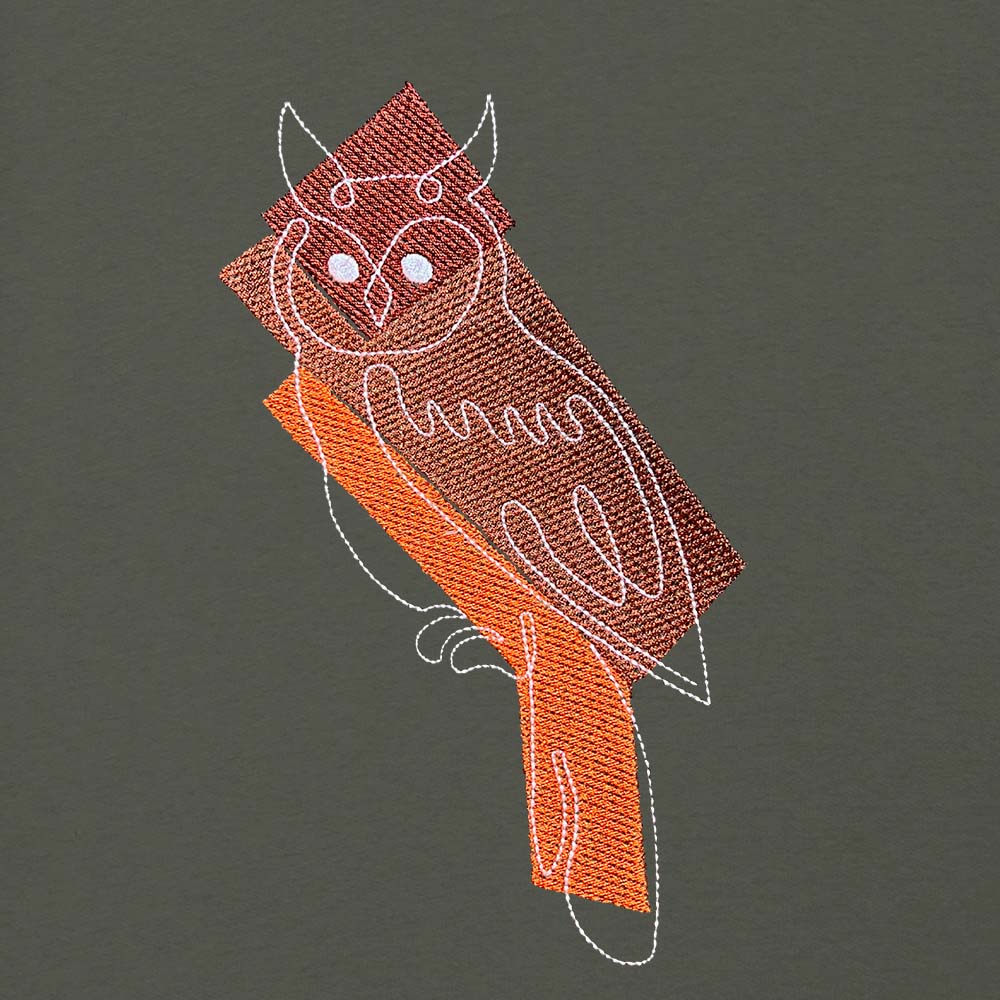Striking about the appearance of the long-eared owl are especially the long ear tufts, which are not real ears. The scientific name means 'eared owl'.
It owes its name to the resemblance to a 'ranse', Middle Dutch for 'hat with a hood that hung down in folds'. The eyes are orange-yellow. Confusion with the eagle owl, which also has ear plumes, is possible, but the latter is considerably larger than the long-eared owl.
The plumage is rusty yellow on the upper side with black-brown spots and stripes, and the bird is otherwise grey-brown mottled and striped. The light yellow underside shows broad dark longitudinal stripes and fine transverse stripes.
This design is embroidered with a low embroidery density. As a result, the underlying fabric is partly visible.
Collection: 'One Line'
85% spun and combed organic cotton
15% recycled polyester
350 grams (GSM)
source: Wikipedia
disclaimer: the color of the product and size of the print may differ slightly from the photo, because each product is unique
It owes its name to the resemblance to a 'ranse', Middle Dutch for 'hat with a hood that hung down in folds'. The eyes are orange-yellow. Confusion with the eagle owl, which also has ear plumes, is possible, but the latter is considerably larger than the long-eared owl.
The plumage is rusty yellow on the upper side with black-brown spots and stripes, and the bird is otherwise grey-brown mottled and striped. The light yellow underside shows broad dark longitudinal stripes and fine transverse stripes.
This design is embroidered with a low embroidery density. As a result, the underlying fabric is partly visible.
Collection: 'One Line'
85% spun and combed organic cotton
15% recycled polyester
350 grams (GSM)
source: Wikipedia
disclaimer: the color of the product and size of the print may differ slightly from the photo, because each product is unique




